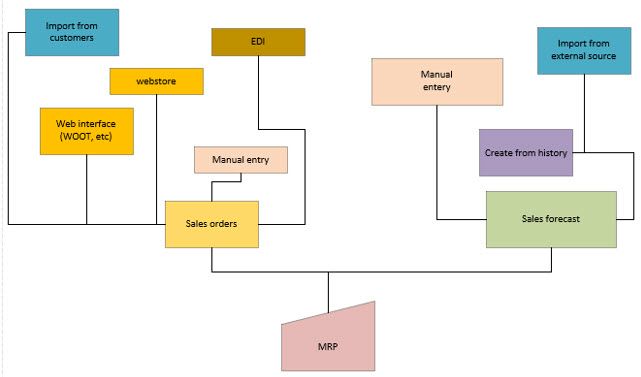Sales orders are hard orders from your customers for your products. These are typically sent to you with a Purchase Order referenced and contains the parts, quantity, delivery, and prices.
We have a number of ways to enter these into our system.
Manual Entry – we have a data entry screen that you can enter the information into our system. This can optionally contain more than 100 pieces of information. We allow unlimited number of parts on a single order with multiple delivery dates and pricing per line item.
EDI – Electronic Data Interchange. we allow unlimited number of trading partners to be defined, each with their own mapping of data to allow the automatic creation of sales orders in our system. It is customary to work through a 3rd party service to control the transmission of the data.
Webstore Interface – integration with webstore sites. We don’t create nor administer your webstore, but we have worked with many partners to integrate the orders directly into PROMAN from the webstore.
Web Interfaces – we have different interfaces that can be configured from websites such as Amazon, WOOT, and others. This allows for the direct order to be loaded into your PROMAN system.
Customer Interface – we have an interface that can be mapped to specific customer electronic files. This requires an agreement about what data is sent to you and in what format. The system can be configured to accept this data and then create the sales order in your PROMAN system.
Regardless of which for works for your company (or combination of approaches), you can manually update your sales order in PROMAN with the manual entry.
To PROMAN system, all orders are processed the same. This means that the orders can optionally go through a credit process and review process.
With the proper configuration, a webstore could be entered by your customer and the shipping document printed on shipping dock in minutes after any manual effort. We have customers that can ship product within 30 minutes of the customer clicking “save” (or checking out their cart).

